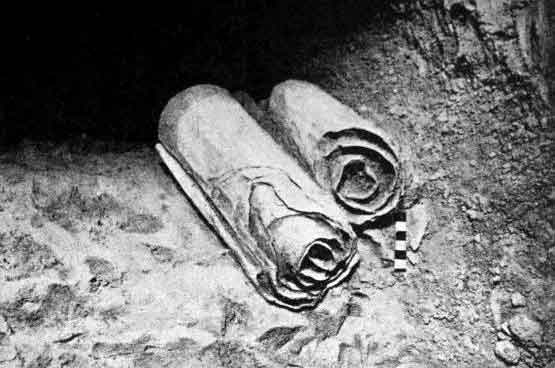The northern shore of the Dead Sea is a very dry place. It is 13 miles from Jerusalem, and while the area is often shrouded by fog, the humidity levels are very low: it is the perfect place to preserve ancient artifacts. In the spring of 1947, two young Bedouin shepherds were searching for a lost goat among the cliffs in the area known as Qumran. As they hunted from cave to cave, they found a jar containing many papyrus and parchment manuscripts. This scroll only became famous when the Bedouins sold seven of the texts to a local antique dealer. As the world's academia developed, the global community of historians rejoiced at this extraordinary discovery. They say it is the most important discovery of the century.
In 1949, the site where the scroll was found was thoroughly surveyed by archaeologists. Many fragments of scrolls were excavated, along with pieces of cloth, pottery, and wood.
Over the next seven years, ten more caves containing ancient texts were discovered in the Qumran area, and around 850 different scrolls were found. The caves were given names in the order in which they were searched, and cave four, discovered in 1952, proved the largest artifact haul with 15,000 fragments from 500 different manuscripts.
A complex of ancient structures close to the cave, known as the Qumran ruins, was also excavated. Scientists estimate these relics to date between the third century BC and 68 AD, placing them around the time of Christ. It seems that the texts from the library of a Jewish sect are similar to the Essenes.

The Essenes were a strict Torah observing society, that disfavored the established priesthood and may have been completely removed by the Jerusalem-based church. It is thought that the ruins at Qumran formed part of their society, and the scrolls were hidden from the advancing Roman army around 70 AD. The really interesting thing about the scrolls is not their history, but what they actually say.
The scrolls have been deciphered and reconstructed by modern scientists. They tend to fall into two groups, with texts relating to religion and others revealing details of daily life and history. There are copies of many biblical writings and only one Old Testament book.
Even more, interestingly, there are previously unknown psalms written by Kings David and Joshua, as well as several prophecies attributed to Ezekiel, Jeremiah, and Daniel that do not appear in the Bible. The scrolls contain previously unknown stories about Enoch, Abraham, and Noah.
Similarly, the lost words of Amram, Joseph, Judah, Levi, and Naphtali are also revealed in the texts. Surprisingly, given their date and proximity to New Testament events, the life of Jesus Christ is not mentioned. The scroll is primarily written in Hebrew, but also features passages in Aramaic and Greek.
Some of the scrolls explain the laws and codes of battle, while others tell the poetry and philosophy of the sages. The most mysterious information contained in the scrolls is a list of 64 places around Israel where ancient treasures were buried. It is said that not only gold and silver were hidden there, but many sacred objects from the Jerusalem temple were stored in distant and unknown places. Although the scrolls were all discovered within eight years, the collection has been spread across several universities, museums and scientific institutions around the world.
Read also The Mystery of the Bull Disc on the Antikythera Shipwreck
